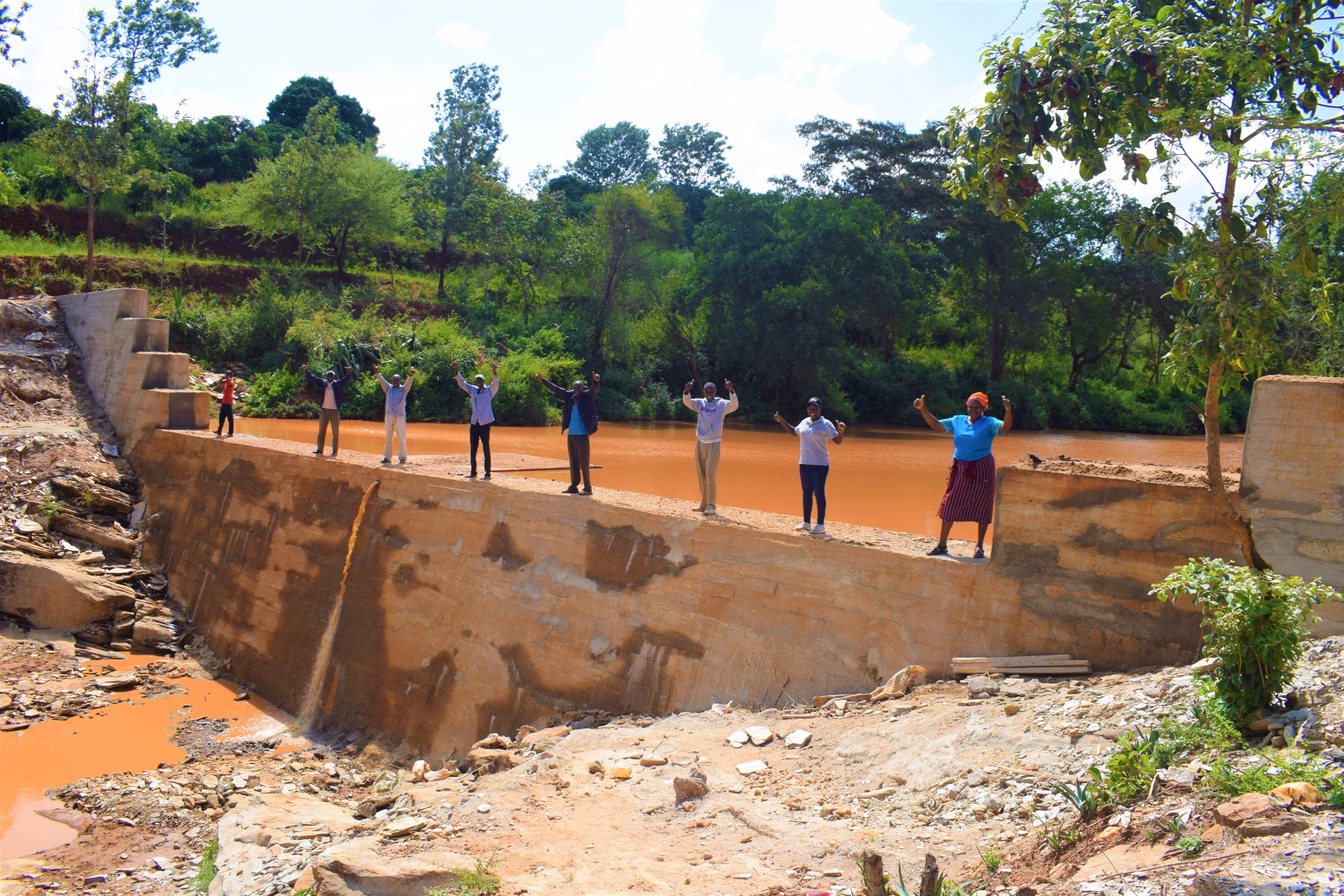
The construction of sand dams in the region is community-driven. Africa Sand Dam Foundation — which helped build the dams in Kyalika and Kasengela — is one nonprofit supporting communities in Makueni, Machakos and Kitui to build sand dams. Residents approach the nonprofit with a request to build a dam and provide sand, rocks and other locally available material plus labor. Meanwhile, the nonprofit, through partners, provides hardware material such as cement and skilled expertise. After construction, the community manages the sand dam.
Since it started in 2010, the nonprofit has constructed 680 sand dams in the three counties.
“We’ve used this model for years, and we’ve seen its success,” said Andrew Musila, development director at Africa Sand Dam Foundation, at the Kasengela site. “To us, sand dams are the best solution for water provision in arid regions and the best solution for providing communities with water throughout the year.”
The usefulness of the structures has gained the attention of governments of other local counties, as well as other countries. ASDF has worked with governments and nonprofits in Malawi, Zimbabwe, Mozambique, Madagascar, Eswatini, Ethiopia, Tanzania, Somalia and India to site, design and build sand dams as well as train people in the processes.
Scientists warn that proper siting of sand dams is key to making them work. A study carried out in Kitui County found that about half of 116 sand dams surveyed were not functional because they were built in locations with unfavorable factors for enabling sand dams to supply water. Factors to consider, the study says, include the rainfall amount, the percentage of clay in the soil and the presence of visible rock formations.
“You cannot put a sand dam anywhere,” said Keziah Ngugi, lead author of the study and a hydrologist with interest in dryland areas. “The most important thing to observe is the siting.”
And as climate change makes drought more likely, scientists say the structures minimize water loss through evaporation because they store water within sand, and that helps with water supply during dry seasons. Additionally, they say the structures rejuvenate surrounding vegetation and recharge groundwater, raising the water table.
“There are good things that happen when the water table is raised,” said Dorcas Benard, an environmental and biosystems engineer. She gave examples of the emergence of alternative water sources or resources like springs and boreholes. “These are very important sources, especially within the arid and semi-arid lands.”
And for residents like Mutua, the builder in Kasengela, they offer hope for improved livelihoods. Spending weeks building the dam with fellow residents may be arduous work, but the reward of having reliable water near his home will be fulfilling in immeasurable ways.
